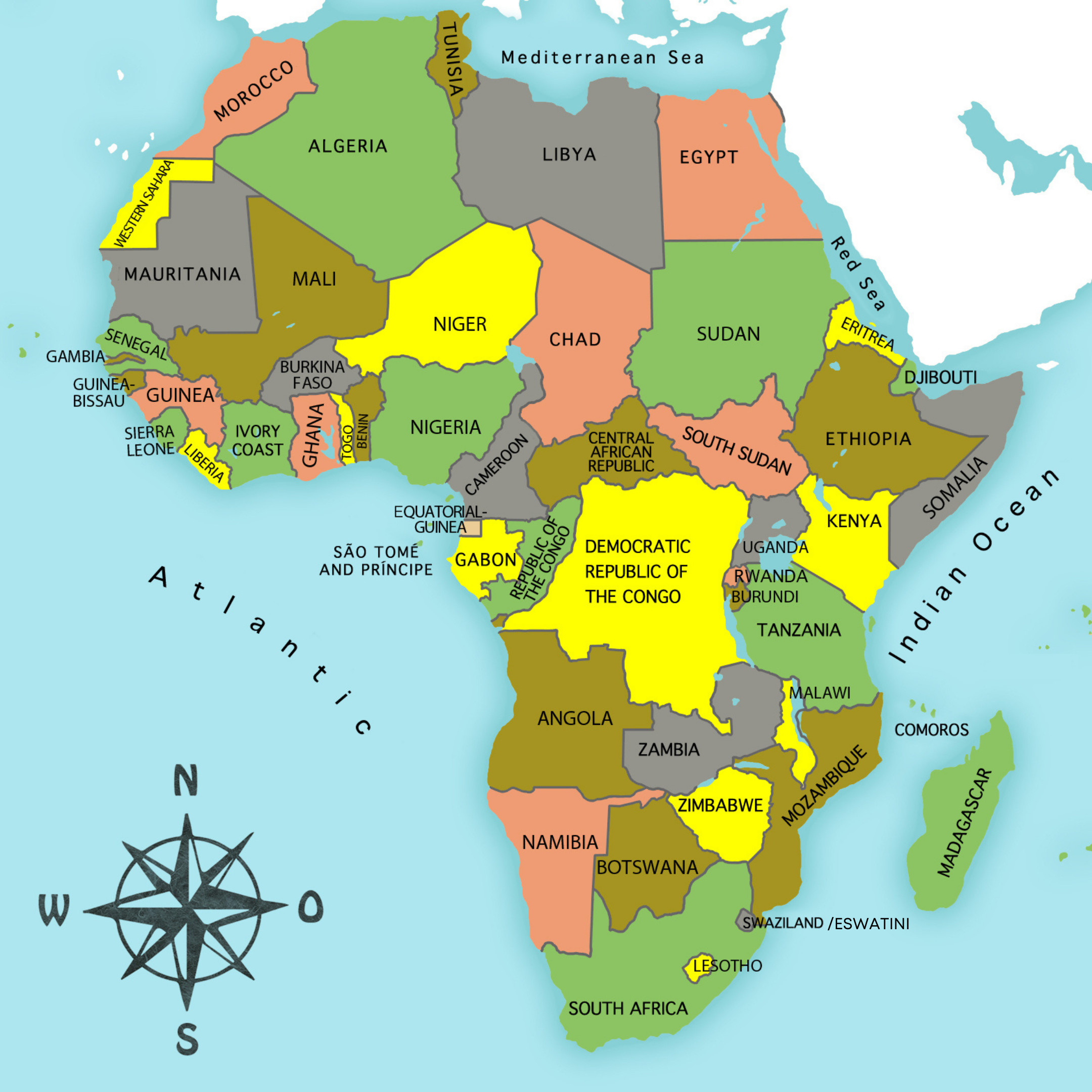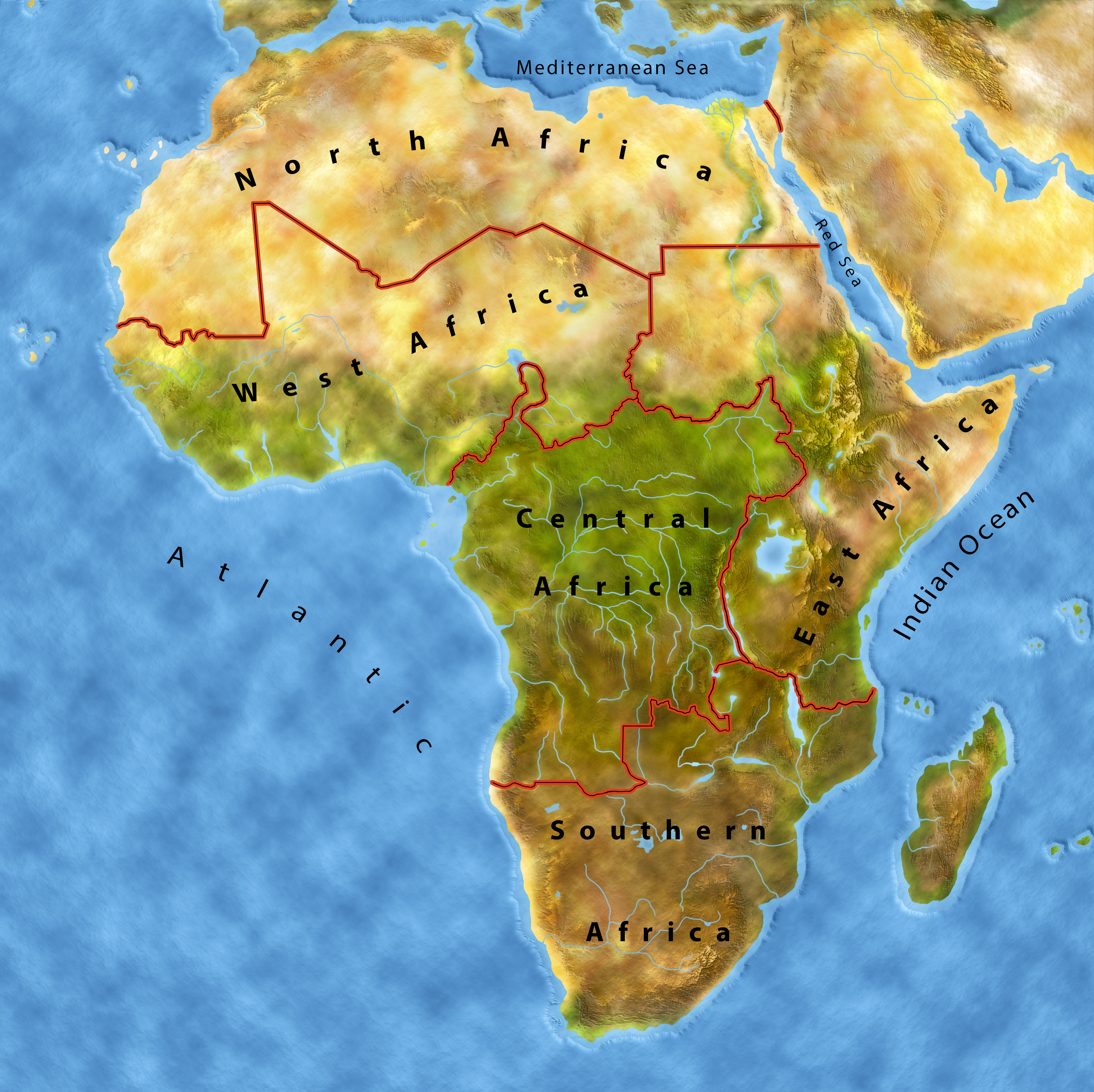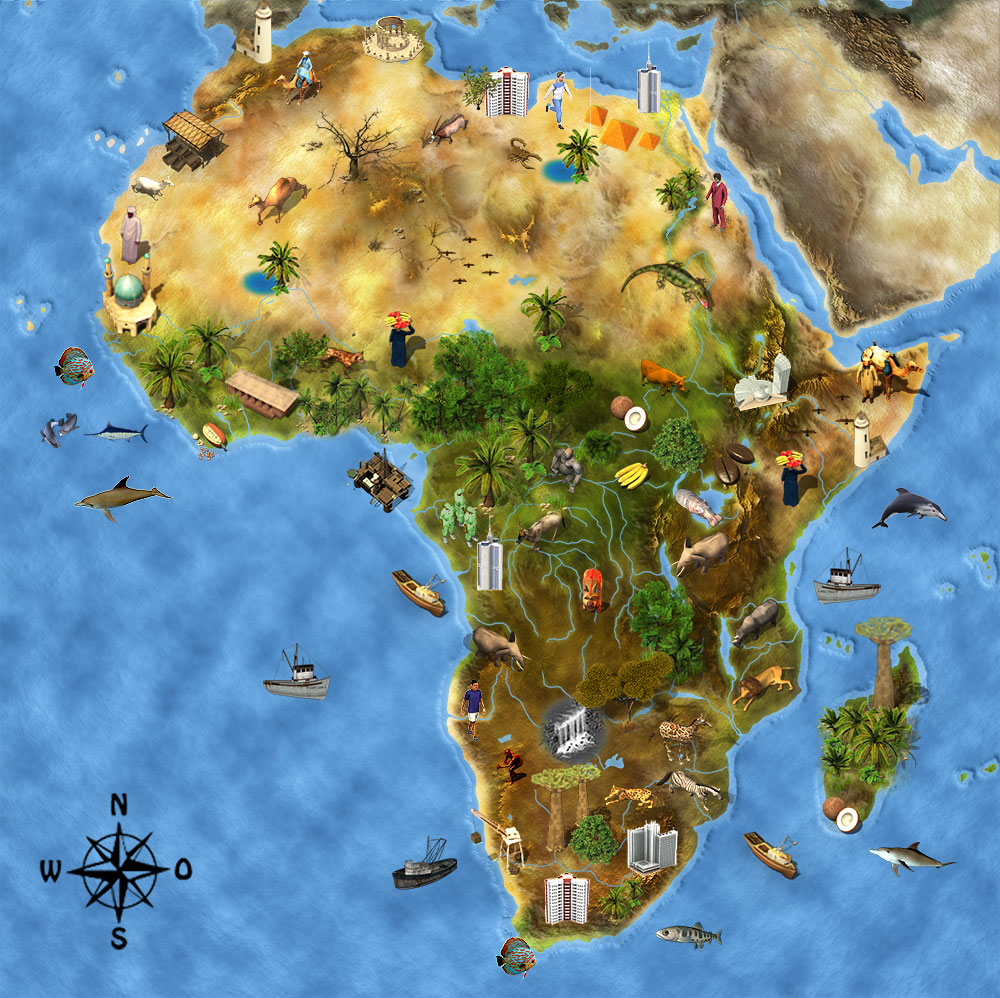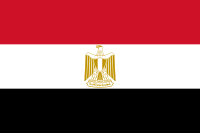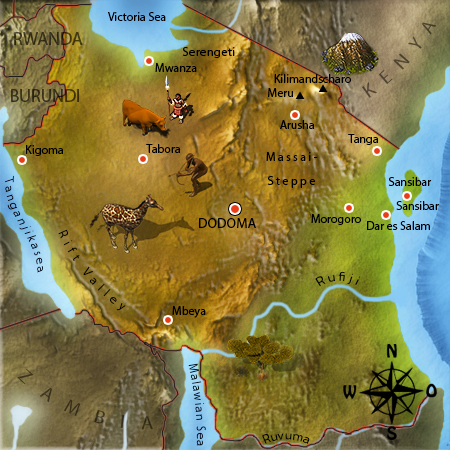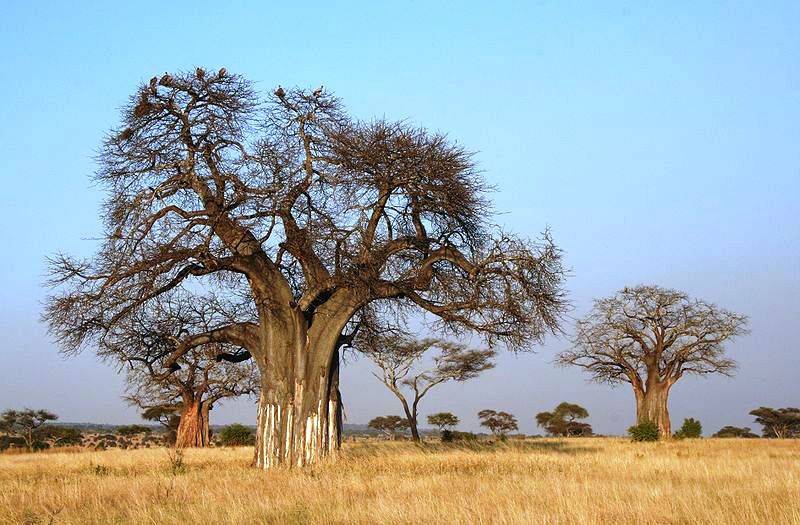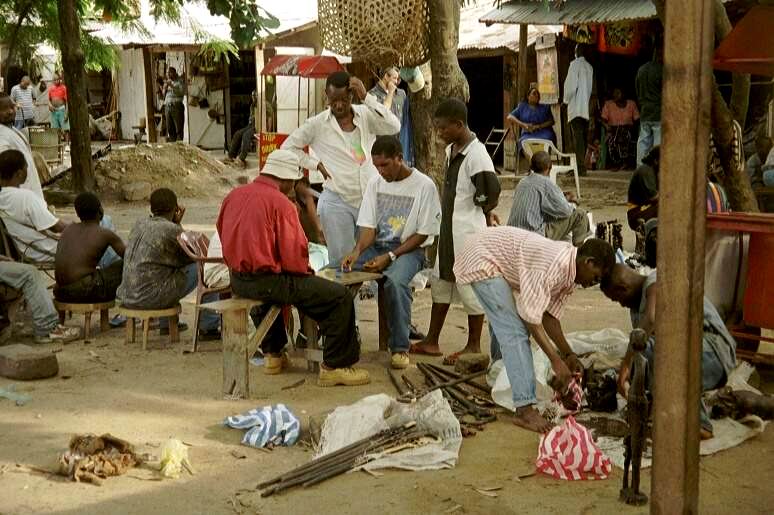Karibu, welcome to Tanzania, the country with an amazing wildlife!
Tanzania is one of the most visited countries in Africa. Every year, a dramatic spectacle can be witnessed here. At the beginning of the rainy season, vast herds of animals make their way across the savanna. This East African country, is two and a half times bigger than Germany, but with a population only half its size. A quarter of the country’s surface area is assigned to nature reserves.
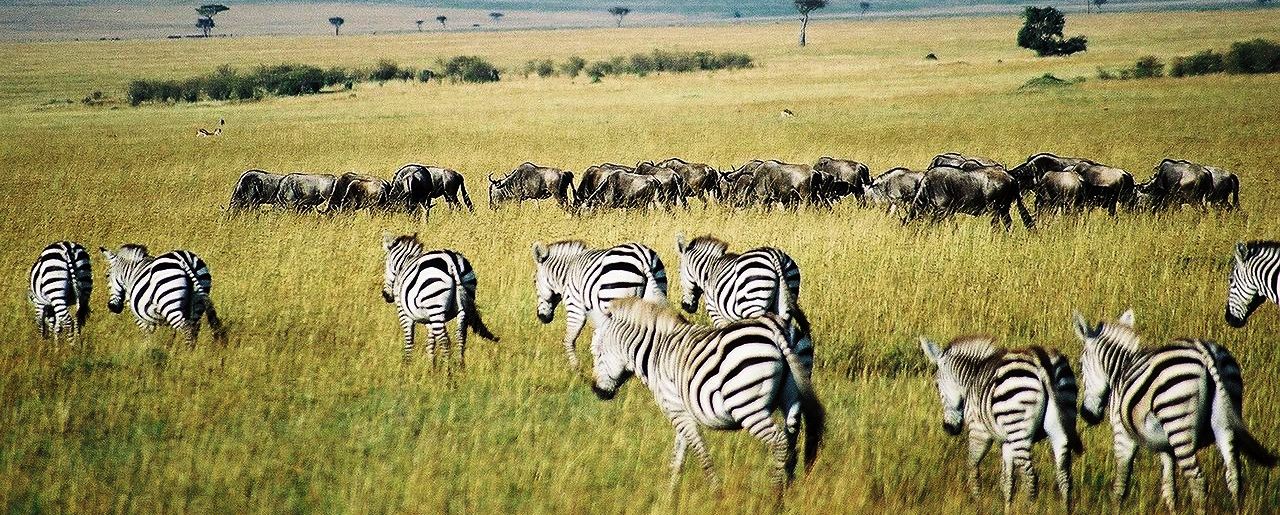
Location
Tanzania is situated in the highlands of East Africa near to the equator. Tanzania has a long coastal area on the Indian Ocean. Just off the coast there are a number of islands, the largest of which is Zanzibar. As you can see on the map, Tanzania is separated from other neighbouring countries by many rivers and lakes. It is separated from Uganda by Lake Victoria. Lake Malawi separates Tanzania from Malawi. In the south, the River Ruvuma forms a border to Mozambique. Only Rwanda, Burundi, and Kenya, have manmade borders with Tanzania.
The beautiful Landscapes of Tanzania
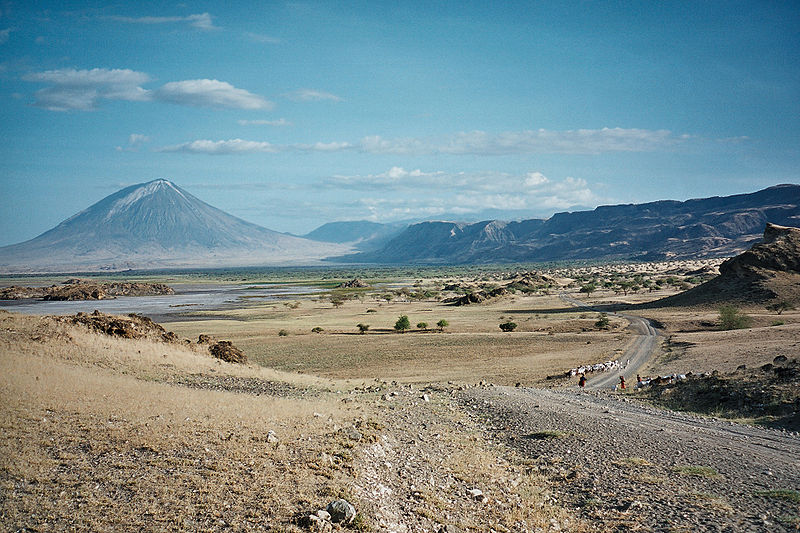
Tanzania has a huge range of landscapes - from lava rubble deserts to the everlasting ice at the peak of Mount Kilimanjaro. But Tanzania is covered mainly by far-reaching savannah land. These are made up of endless stretches of grasslands and tree savannahs. Here Acacia and Baobab trees grow. Dry woodlands provide a transition between the savannahs and mountain rainforests in the west of Tanzania. Nearer to the coast, palm trees dominate the landscape. Another characteristic feature is the Ngorongoro Crater on the edge of the Serengeti, one of Africa’s largest conservation areas. Some of the earliest traces of mankind were discovered here.
Kilimanjaro and the East African Rift
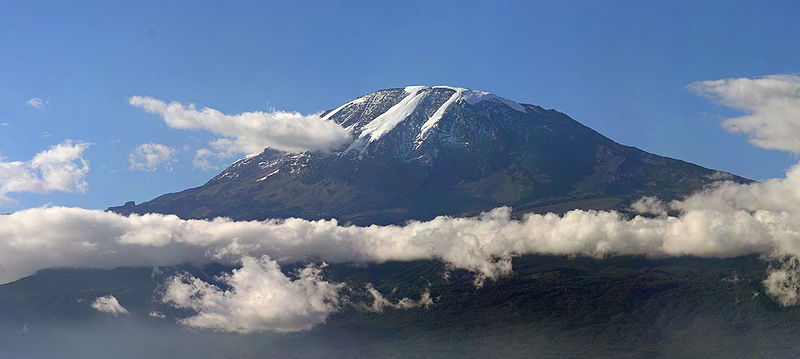 Kilimanjaro and the East African Rift formed millions of years ago when powerful earthquakes and volcanic eruptions shook the entire continent. In the east and in the centre of the African tectonic plate, two deep cracks appeared, now known as the East African Rift and the Albertine Rift. Within the Albertine Rift, Lake Tanganyika formed and is situated on the western border of Tanzania. The surface of the earth in this region is still very unstable. Researchers believe that in the next thousand years the area east of the Albertine Rift will gradually move away from the rest of the continent. The East African Rift runs through East Africa forming a fork-like line. On either side of the rift the land has been driven upward by the plate collisions to form volcanoes, which are today no longer active. The tallest volcanoes are the 4566 meter high Mount Meru and the almost 6000 meter Kilimanjaro.
Kilimanjaro and the East African Rift formed millions of years ago when powerful earthquakes and volcanic eruptions shook the entire continent. In the east and in the centre of the African tectonic plate, two deep cracks appeared, now known as the East African Rift and the Albertine Rift. Within the Albertine Rift, Lake Tanganyika formed and is situated on the western border of Tanzania. The surface of the earth in this region is still very unstable. Researchers believe that in the next thousand years the area east of the Albertine Rift will gradually move away from the rest of the continent. The East African Rift runs through East Africa forming a fork-like line. On either side of the rift the land has been driven upward by the plate collisions to form volcanoes, which are today no longer active. The tallest volcanoes are the 4566 meter high Mount Meru and the almost 6000 meter Kilimanjaro.
Lake Victoria
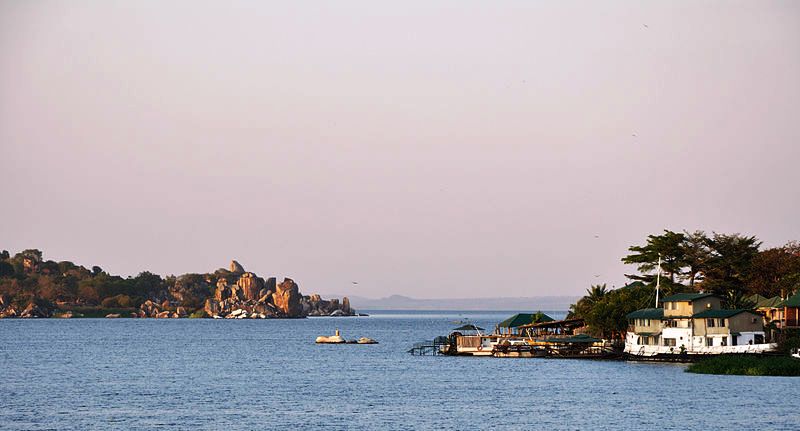 Lake Victoria is Africa’s biggest lake. It is so large that from some areas of the lakeside the other side cannot be seen. No wonder, given that with an area of 68,000 square kilometres the lake is almost as big as Bavaria. Lake Victoria connects three countries: Tanzania, Kenya and Uganda. 30 million people live along the shoreline. The lake is home to almost 550 different species of fish! However since the Nile Perch species was introduced to the lake many decades ago, other species are under threat. It was hoped that introducing the species would increase the fishing yield as it is known to reproduce very rapidly. But the ravenous Nile Perch consumed so many of the smaller fish that some species have been almost completely wiped out. Any reduction in the diversity of a species means a loss for planet earth. Now something very contradictory has occurred: Due to heavy fishing and exportation of the Nile Perch, which is popular cuisine in Europe and the USA, there are fewer in Lake Victoria and smaller species are once again able to breed effectively.
Lake Victoria is Africa’s biggest lake. It is so large that from some areas of the lakeside the other side cannot be seen. No wonder, given that with an area of 68,000 square kilometres the lake is almost as big as Bavaria. Lake Victoria connects three countries: Tanzania, Kenya and Uganda. 30 million people live along the shoreline. The lake is home to almost 550 different species of fish! However since the Nile Perch species was introduced to the lake many decades ago, other species are under threat. It was hoped that introducing the species would increase the fishing yield as it is known to reproduce very rapidly. But the ravenous Nile Perch consumed so many of the smaller fish that some species have been almost completely wiped out. Any reduction in the diversity of a species means a loss for planet earth. Now something very contradictory has occurred: Due to heavy fishing and exportation of the Nile Perch, which is popular cuisine in Europe and the USA, there are fewer in Lake Victoria and smaller species are once again able to breed effectively.
Zanzibar, the famous Spice Island
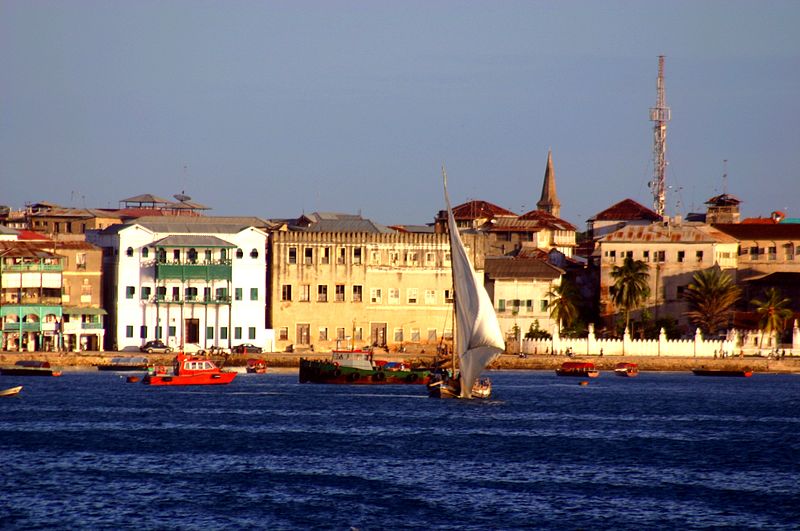
There are a number of islands which belong to Tanzania. Zanzibar is the best-known island, situated in the Indian Ocean. The island is known for the variety of unique spices that grow only there. Clove plants grow in the fields along with coconut palms, vanilla and other spice trees. The five metre-high mangrove trees are a special feature of the landscape. However, the island also has a dark history of slavery.
Dodoma and Dar es Salaam – The biggest Cities in Tanzania
Dodoma, the capital city of Tanzania, is situated in the centre of the country and has a population of around 200,000. Despite this being the capital, the seat of government is located elsewhere, in the much larger coastal city of Dar es Salaam.
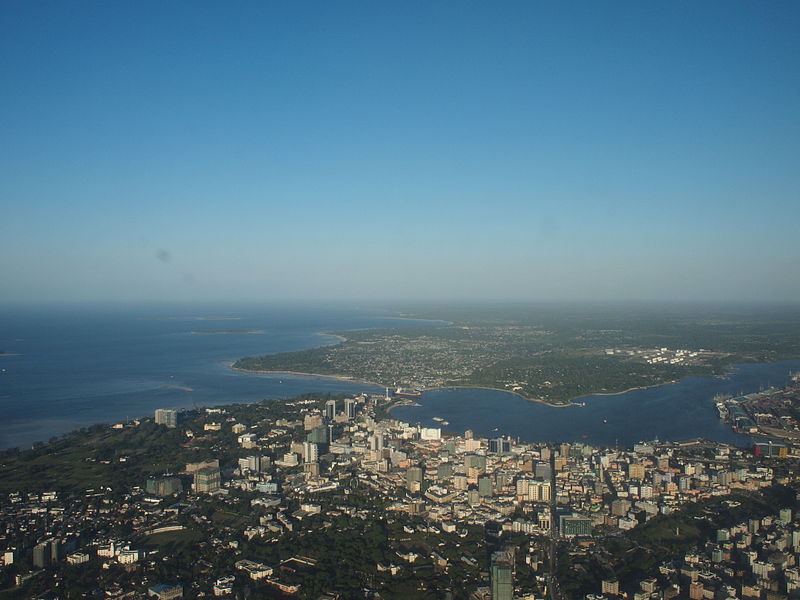
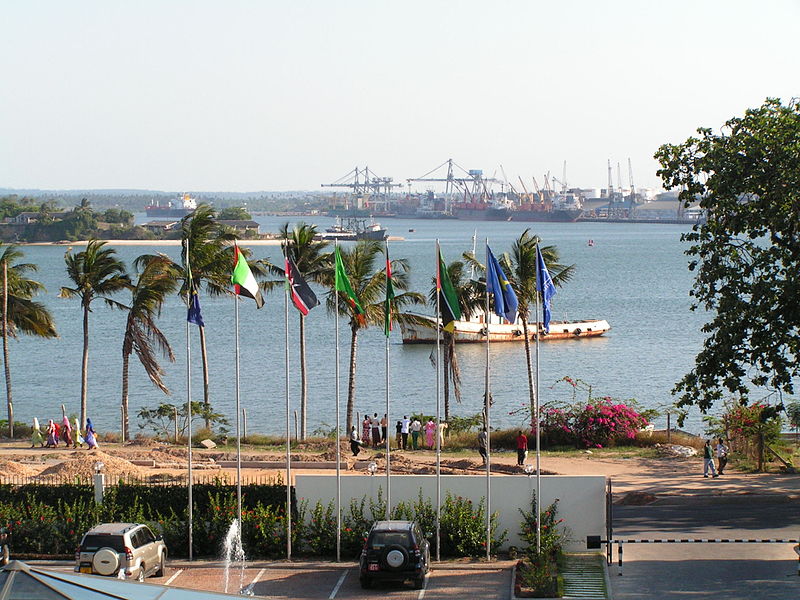
This is the economic centre of the country. For hundreds of years the harbour has played an important role in trade between Africa, India and the Arabian Peninsula. More than 3 million people live in this coastal city. Dar es Salaam means “The Abode of Peace”. The city is very modern and because of its high-rise buildings and luxury hotels, it also seems highly influenced by the west. The colourful, raucous marketplaces give it an African-Arabic flair. Huge docks and container terminals line the harbour. Colourful ferry boats collect tourists for trips to surrounding islands. There is a lively music scene in most of the city’s neighbourhoods where pop, rap and soul music can be heard playing in local bars. Universities enhance Dar es Salaam’s cosmopolitan spirit, drawing people from rural areas towards the city. As a result, slum areas have increased, as in many other large African cities.
Peoples and Languages
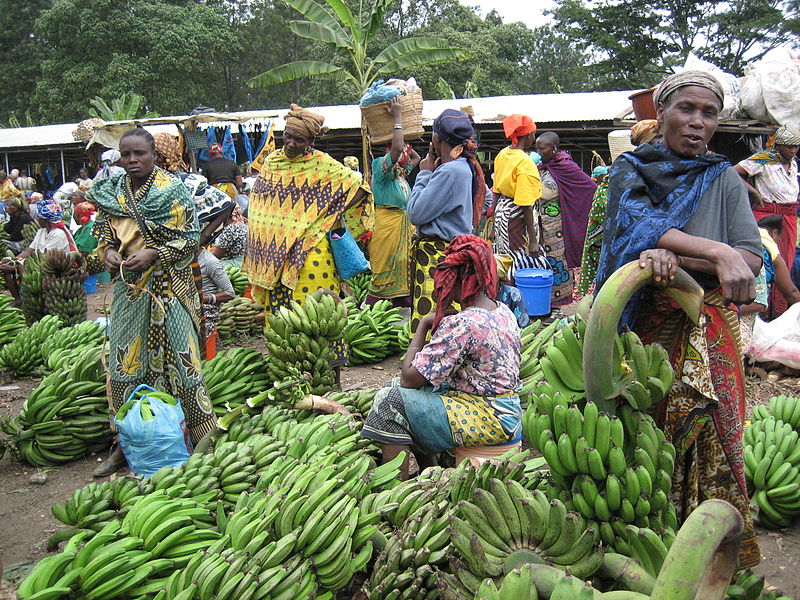 Tanzania is a colourful multinational state. Members of the Bantu people form the majority of the population. They call themselves Sukuma, Nyamwezi and Swahili and usually populate coastal areas. The best-known ethnic group is the Massai. Although their numbers are vanishingly small, their colourful traditional dress makes them stand out wherever they go. Alongside them many other nationalities are represented in Tansania such as Arabs, Pakistanis, Indians and Europeans. The official language in Tanzania is Kiswahili, which forms a uniting link between all ethnic groups. This is very surprising because during colonisation, English was the main administrative language. But the Tanzanians decided to keep their own language. Today English is spoken neither in parliament nor in government.
Tanzania is a colourful multinational state. Members of the Bantu people form the majority of the population. They call themselves Sukuma, Nyamwezi and Swahili and usually populate coastal areas. The best-known ethnic group is the Massai. Although their numbers are vanishingly small, their colourful traditional dress makes them stand out wherever they go. Alongside them many other nationalities are represented in Tansania such as Arabs, Pakistanis, Indians and Europeans. The official language in Tanzania is Kiswahili, which forms a uniting link between all ethnic groups. This is very surprising because during colonisation, English was the main administrative language. But the Tanzanians decided to keep their own language. Today English is spoken neither in parliament nor in government.
Schools and Education
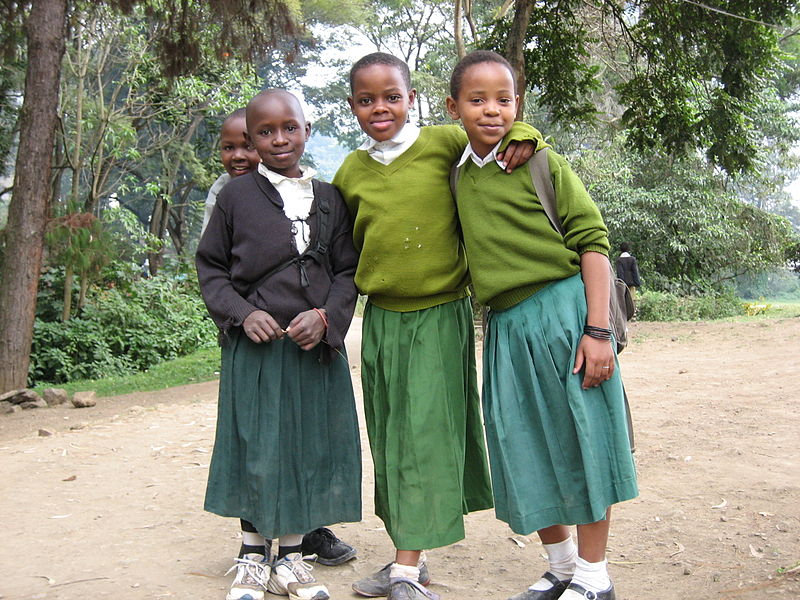 As a former British colony, Tanzania has an English school system. In 1978, general compulsory education was introduced. This only includes primary school, so from reception to year 6. Although there is no cost to attend state schools, school uniforms, books and stationary are so expensive that some parents are not able to send all of their children to school. Therefore not all children in Tanzania are able to read and write. Only very few children go on to secondary school because this involves a fee of between 85 and 350 Euros per year. Many children from poorer families have no choice but to earn the money to cover school fees themselves. Girls often work in housekeeping alongside school and boys usually earn money by helping at markets or on plantations.
As a former British colony, Tanzania has an English school system. In 1978, general compulsory education was introduced. This only includes primary school, so from reception to year 6. Although there is no cost to attend state schools, school uniforms, books and stationary are so expensive that some parents are not able to send all of their children to school. Therefore not all children in Tanzania are able to read and write. Only very few children go on to secondary school because this involves a fee of between 85 and 350 Euros per year. Many children from poorer families have no choice but to earn the money to cover school fees themselves. Girls often work in housekeeping alongside school and boys usually earn money by helping at markets or on plantations.
Celebrations and Holidays
Each community celebrates its own traditions, but the most significant holidays are observed by all. This includes Christmas as well as some Islamic holidays. National events are celebrated by all Tanzanians, such as the Union Day in April, which marks the union of Tanganyika (Tanzania’s former name) and Zanzibar. December 9th is the Day of Independence from British colonisation, this day is celebrated across the country in the form of procession and dance. Alongside this there are many traditional festivals and events. The Kilimanjaro Marathon is an annual sporting event. Marathon runners from all corners of the world take part. It is agreed that after reaching a height of three thousand metres, participants can give up without feeling ashamed. Not everyone can tolerate the mountain air! In July, artists and filmmakers flock to Zanzibar to enjoy the Festival of the Dhow Countries, a colourful carnival celebrating African, Arabic and Indian culture.
Art and Music
Tanzanians have an artistic flair for creating jewellery, colourful robes, pots and vases. Such artistic craftsmanship is held in very high regard because these objects are often closely related to religious customs of an ethnic group. Music is an integral part of Tanzanian celebration. The sound of the drum accompanies all celebrations and ceremonies. Alongside traditional music, a unique kind of pop music has developed. One of the most popular music styles in Tanzania is Bongo Flava, a mixture of Swahili Hip Hop and Rap with elements of traditional music. African celebrities are not limited to home soil, but are also well known in Europe. Tingatinga paintings are very famous outside of Africa. This style of painting was named after Eduardo Tinga Tinga who made a living during the 70s by selling his paintings to tourists. His style later developed into forming lots of small squares together displaying bold, colourful, happy scenes.
Economy and Natural Resources
Tanzania is a country rich in agriculture, particularly because of its many rivers and lakes. It is the most water rich country on the whole continent. Three quarters of the population lives on food produced by farming or from fishing yield. Cassava, corn, rice, millet, pulses and bananas grow in the fields. Sugar cane and vegetables are also cultivated there. Important export goods include coffee, cotton, sisal, tobacco and tea, but most importantly rubber and cloves.
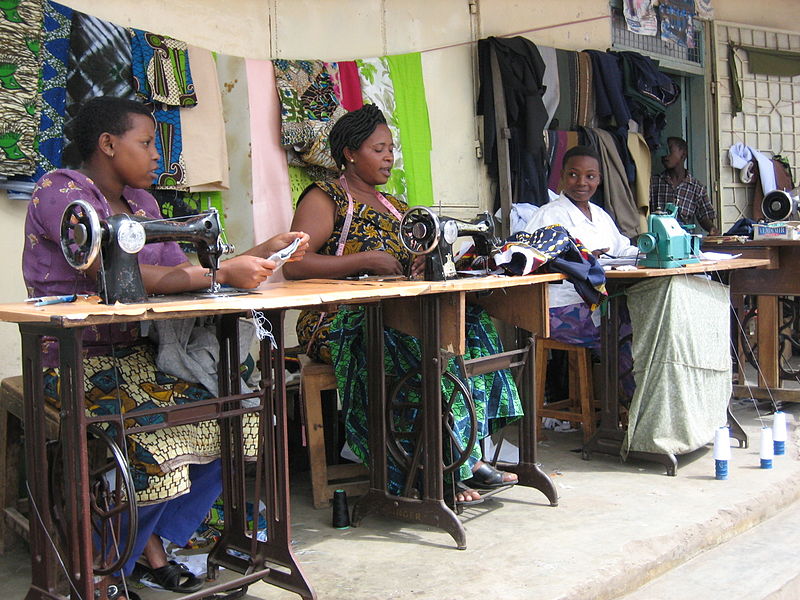
If Tanzania were measured only on its raw materials it could be considered a very rich country. But resources such as coal, iron ore, gypsum and phosphate are barely yielded here. This is because Tanzania’s infrastructure is not developed enough to provide roads and transport needed for this kind of activity. Even the many nature reserves and the tourist industry in the north provide the population of this area with only a modest income. The yearly average income for a family is around 225 Euros.
Tanzania's Animal Kingdom
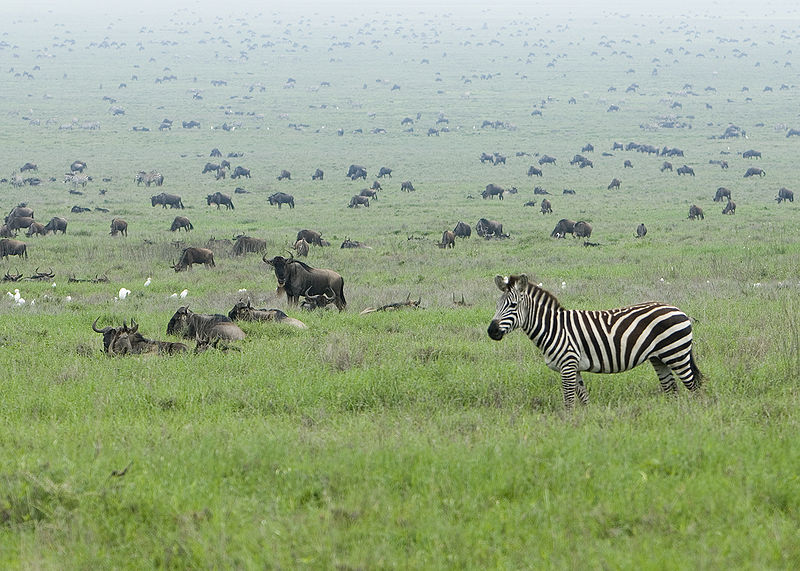 When it comes to animal protection in Africa, Tanzania breaks all the records. More than a quarter of its surface area is devoted to national parks. Far away from civilisation in the Serengeti lives the largest and most cohesive population of wild animals. The “Big Five” can be observed here: The elephant, lion, leopard, rhino and buffalo. In the past these animals were highly sought after as hunting trophies. Zebras and wildebeest make their way across the far-reaching stretches of protected land. Most elephants can be found living in the Selous Game Reserve, over an area the size of Denmark. Other animals such as lions, leopards, cheetahs, hyenas, African wild dogs and jackals also live in this area. A wide variety of different bird species including ostriches, herons, flamingos, pelicans, cormorants, and other birds of prey nest along the riverbanks. Reptiles like crocodiles, snakes and lizards are also present here.
When it comes to animal protection in Africa, Tanzania breaks all the records. More than a quarter of its surface area is devoted to national parks. Far away from civilisation in the Serengeti lives the largest and most cohesive population of wild animals. The “Big Five” can be observed here: The elephant, lion, leopard, rhino and buffalo. In the past these animals were highly sought after as hunting trophies. Zebras and wildebeest make their way across the far-reaching stretches of protected land. Most elephants can be found living in the Selous Game Reserve, over an area the size of Denmark. Other animals such as lions, leopards, cheetahs, hyenas, African wild dogs and jackals also live in this area. A wide variety of different bird species including ostriches, herons, flamingos, pelicans, cormorants, and other birds of prey nest along the riverbanks. Reptiles like crocodiles, snakes and lizards are also present here.
![]() More about the animals of the savanna
More about the animals of the savanna
The History of Tanzania
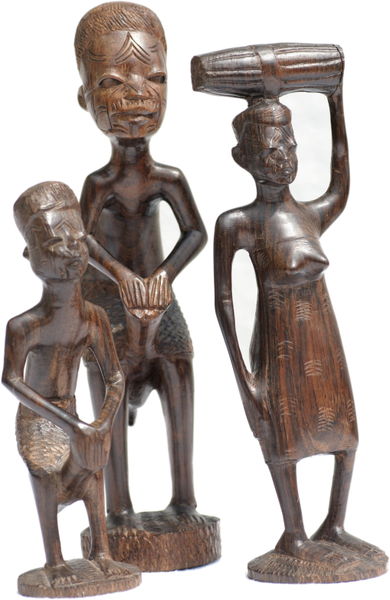 The history of Tanzania reaches back to the first humans. According to the latest research, the cradle of humanity is situated in the East African Rift. While discoveries of human bones in Europe can be traced back 1.5 million years, discoveries in East Africa go back as far as 6 million. Tanzania as it is today only exists since the end of the 19th Century, that is since 1890 when it was occupied by the Germans. During the almost 80 year long colonisation, firstly by the Germans and later the English, the country underwent a number of changes. After much struggle, on the 9th December 1961 Tanzania achieved independence. Julius Kambarage Nyerere, who fought for African freedom, became the first state president.
The history of Tanzania reaches back to the first humans. According to the latest research, the cradle of humanity is situated in the East African Rift. While discoveries of human bones in Europe can be traced back 1.5 million years, discoveries in East Africa go back as far as 6 million. Tanzania as it is today only exists since the end of the 19th Century, that is since 1890 when it was occupied by the Germans. During the almost 80 year long colonisation, firstly by the Germans and later the English, the country underwent a number of changes. After much struggle, on the 9th December 1961 Tanzania achieved independence. Julius Kambarage Nyerere, who fought for African freedom, became the first state president.
Tanzania Today
Politics in Tanzania is formed of a democratic multiparty system. The president has more influence than in western democracies. Politicians have spent the last 20 years focusing on fighting corruption. State owned enterprises have been privatised and tourism has been expanded. Today the country is considered politically stable, however the critical press is still restricted as to what it can print. Tanzania’s population is growing continuously. More than 40 million people inhabit the cities and coastal regions. Despite the fact that the cities are becoming increasingly modern, Tanzanians go to great lengths to preserve old traditions. Christians and Muslims live peacefully alongside one another. This is particularly important in a multinational state surrounded by countries where religious conflict is an ongoing problem.


